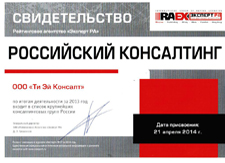НАША МИССИЯ
Мы содействуем становлению и развитию финансового сектора в странах Восточной Европы и СНГ, помогаем финансовым институтам добиться успеха, стабильности и процветания.
Контакты:
- — Россия
- — Великобритания
- — Беларусь
- — Украина
Целесообразность каждого из них необходимо оценивать сугубо с учетом поставленных задач, текущего состояния действующего бизнес-процесса, уровня квалификации персонала, уровня занятости основных специалистов и т.д. Положительные примеры реализации проекта есть как по любой из перечисленных форм сотрудничества с консультационными компаниями,
Title
Obstacles is what scares you when you
remove your eyes from the goal.
H.Ford
The life cycle of any company includes the concept of "tactical planning" and "strategic planning".
The development strategy of an enterprise determines its plans in the long term. These plans may be associated with the conquest of the market and making a profit. Tactical actions are usually directed inside the organization itself. They are the steps to achieve the strategic goals.
Usually strategy is developed for several years being specified in various projects, programs and practices and implemented in the course of their execution. Considerable time and labour costs of many people engaged in creation of a business strategy do not allow it to be frequently changed or severely corrected. Therefore, it is formulated in a rather general terms. This is the intended strategy.
However, both within and outside of the organization new contingencies appear that do not fit the original concept of the strategy. They can, for example, open new prospects and opportunities to improve the situation or, alternatively, force to refuse the proposed policy or plan of action. In the latter case, the initial strategy becomes unfeasible and the company moves to reviewing and formulating urgent strategic task.
The strategy development process can be done in various ways:
- By senior management, when top management performs brainstorming.
- By engaging the existing Planning Department of the company to help senior management
- By engaging a consulting firm to perform strategic analysis
- By creating a team of specialists from the company and providing them with consulting support expressed in 1-2 consultants.
Each above approach has its own peculiarities and difficulties in implementation.
For example, employees of the Planning Department spend most of their time on the corporate budgeting process, as well as managing acquisitions. They simply do not have the time and resources required for the assessment and development of initiatives for profitable growth for each of the business units.
In turn, the top management sole authority to evaluate and formulate growth initiatives has some potential benefits. When upper management is a strong group which makes decisions quickly and has a wide and deep knowledge, such an approach is effective. However, the assessment of strategic initiatives in such a situation is rarely based on solid data.
Besides, when new products or markets are discussed, team leaders simply do not know the level of competition, the customer base, the success factors of consumers and the overall attractiveness of market opportunities.
Moreover, by not including the department heads in strategic planning sessions the senior management does not develop future talent. Finally, heads of departments do not always enthusiastically take initiatives developed by senior management and, accordingly, this lack of involvement leads to poor performance.
Defining a strategy by joint efforts of employees and external consultants looks the most attractive way.
Firstly, the cost of this method is quite reasonable because it implies involvement of the department heads in the analysis, modelling and development of recommendations, rather than the exclusive use of consultants’ resources. This reduces costs, develops managers and encourages their commitment to the recommendations they will actually have to execute.
This approach involves participation of one or two strategy development consultants rather than 5 or 10, who will work closely with the heads of departments and help them assess their own strategic initiatives.
Secondly, by helping the business units and managers in the strategic planning process, the consultants at the same time give them the tools and skills necessary to repeat this process in the future, thus reducing dependence on consultants. And by presenting the process, tools, support and training, the planning process with participation of consultants helps the managers to develop strategic thinking skills. This approach prepares them for the future role of senior executives. Consultants do not only help the team in assessment initiatives for profitable growth, but also actively guide and train the team through their implementation to ensure a positive outcome for the organization.
This approach is really a method of careful evaluation, formulation and management initiatives for profitable growth helping to develop key personnel within the company.
All approaches to any organization strategy development are reduced to theoretical analysis in combination with intuition of developers, who should primarily be the persons detailing and implementing the strategy. It is also important to understand that a strategy can never be thought out and calculated up to the end and therefore its adjustment to new and changing internal and external conditions is a necessary procedure.�
NEWS
7 September 2022
The programme to strengthen Azerbaijani financial institutions, funded by the European Bank of Reconstruction and Development (EBRD), the European Union and Türkiye, successfully completed.
more »15 January 2020
TA Consult starts implementation of Uzbekistan: Food Safety Review Project
more »4 January 2020
TA Consult starts implementation of Diagnostics Project with Moldova Agroindbank (MAIB)
more »









